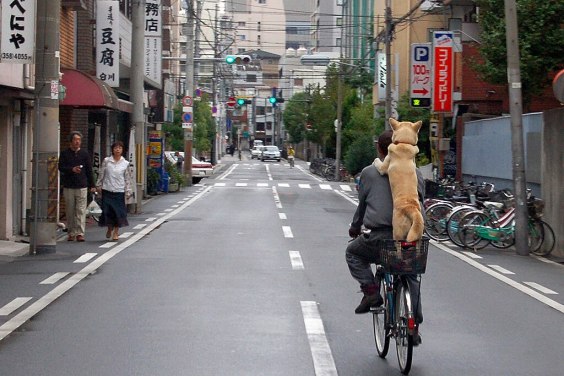As malls have struggled over the last 20 years or so to stay culturally
relevant -- or even profitable -- one of the solutions that has gained
ground is the "lifestyle center." These are malls with sidewalks and
sidewalk musicians, European-style fountains, open-air restaurants, and
of course, lots of shopping. They are prefab places masquerading as
real places. Check out this 2006 piece from Slate and you'll get the idea.
Some
might ask, What's so terrible about that? After all, these neo-malls
take a lot of their design points straight from the new urbanist
playbook. They recognize the human desire to walk in a safe environment
and interact with other humans. They bank on the idea that people
hunger for the connection of street life.
Well, as Streetsblog Network member Extraordinary Observations discovered on a recent trip to Cleveland's Orwellian-sounding Legacy Village,
there's one major hitch: It's impossible or unsafe to approach most
lifestyle centers without a car. Which is why the blog's author, Rob
Pitingolo, calls his post, "Not My Lifestyle Kind of Center":
The Apple Store at Legacy Village: Drive there so you can walk past it. Photo: parislemon via Flickr
Earlier
this week I took my bike and rode over to Legacy Village, one of two
"lifestyle centers" in suburban Cleveland.… Every previous visit I
made, I came and went like 99% of the visitors: by driving in a car and
parking in the ginormous "free" surface parking lot. Only after I made
a trip in a way the designers didn't intend it to be made did I get a
perspective on why these "lifestyle centers" are truly so awful.…There are two
primary entrances to the center. One on Cedar Road and one on Richmond
Road. There is a perimeter road with 25 mph speed limit signs, but the
streets were designed to handle traffic moving at speeds well exceeding
25. Many drivers ignore the speed limit, and why shouldn't they? The
designers built the perimeter road so that they would feel safe flying
around every curve.…[T]he heated sidewalks inside
the center were salted, dried and cleared so that no "pedestrian" would
have any trouble moving from store to store. But the sidewalk right
outside the center on Cedar Road, the street that I carried my bike
along to get to the center, was covered in a foot of week-old snow. No
salt. No plow. Nothing. The street itself was clear and dry. Cars sped
by at 40mph.Legacy Village is surrounded by an ocean of free
parking spaces, but bike parking spaces are few and far between. I
couldn't find a rack near my destination on the main "courtyard,"
although I was told after the fact that there is a rack somewhere near
the Apple store. I locked my bike to a fence and on top of about a
half-foot of snow.In the end, the question in my mind was, what
kind of "lifestyle" does the center attract? It's ironic that in order
to be a pedestrian inside its borders, it's essentially a prerequisite
that you must be a motorist to get there. It's convincing evidence that
if what we want is density and walkability, the solution doesn't come
prepackaged in some faux village on the outskirts of a city. We had
real towns, villages and cities in this country for most of its
history. And we destroyed them and replaced it with this? That's sad.
Really sad.
More from around the network: Bike Portland on the importance of better bike infrastructure for families that ride for transportation. The Bus Bench asks a Metro employee a strangely uncomfortable question. And Bike San Diego posts on the fight for road safety for all users.





